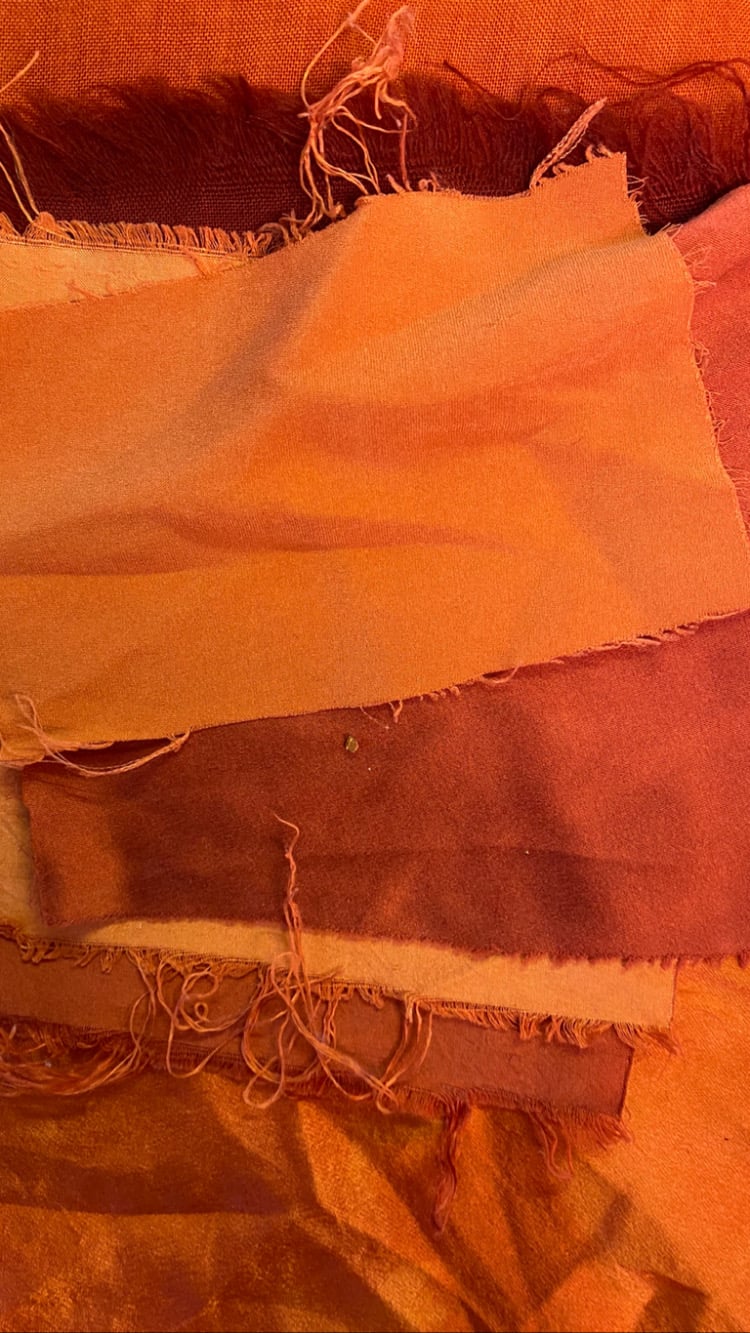British Madder Root
£10.00 Sold Out

Madder (Rubia tinctorum)
This madder is grown on a farm in Guernsey using natural farming techniques, without the use of synthetic pesticides, herbicides and fungacides.
Madder, also known as Dyer’s madder and Common Madder, is native to South-West Asia and naturalized throughout Europe. Its genus name Rubia, comes from the Latin word Ruber, meaning “red”.
It is a small, evergreen, perennial shrub, growing up to 4 feet tall, with prickly stalks, 2-4 inch leaves with a spiny underside and clusters of greeny white flowers. The red brown roots which will grow up to 3 feet long, are the part we harvest for dyeing with.
Madder was once highly prized in many regions of the World, for its brilliant red dye colour. It’s cultivation as a dyestuff and medicine dates back to antiquity and only started to diminish in popularity in the mid-nineteenth century.
It’s use can be dated back as far as the ancient Egyptians, who buried their King Tutankhamen in cloth dyed with it’s red hue, circa 1370-1352 BC and in ancient China to the Zhou Dynasty, more than 2,000 years ago.
It was used as a medicinal plant by the ancients and throughout the middle ages and is still farmed for Ayurvedic medicine in India today.
During the 18th century, the famous tone of the British army “redcoats” was also achieved from madder dye baths.
It was only in 1869, that the dyestuff fell out of popularity, as scientists discovered the compound alizarin, a pigment found in madder root, which they were able to synthesize and produce much more economically. This vastly reduced the demand for the natural plant material.
Ancient Egyptian artists are thought to have made the first red pigments for paints with this root, and artists throughout the 13-16th century are known to use it in their portraiture.
Colours:
Madder can be used to produce a range of different kinds of red, from orangey red to scarlet and brick red. The colour outcome will depend largely on how it was grown and processed.
Ingredients: Whole ground madder root (Rubia tinctorum)
Herbal and traditional uses:
In Ayurveda and Chinese medicine, it’s healing properties are for blood disorders. It’s also believed to stimulate menstruation, to cure jaundice, inflammations, kidney stones, dysentery and is used externally to treat wounds.
Growing:
Grown on a farm in Guernsey using naturul farming techniques, without the use of synthetic pesticides, herbicides and fungacides.
Recipe:
100% WOF
Equal weight of dyestuff to fabric is recommended.
Recipe:
Bring to below a simmer and keep there for 30-60 mins. Strain using a sieve and cheesecloth. Add pre-wetted fibres and simmer for 60 mins or until desired depth of colour achieved. Remove from heat and cool. Rinse, wash and air dry.
Ref Botanical Inks book for further info on dyeing instructions for cellulose/protein fibres, mordanting etc..
Its beneficial to allow the fibres to dry for a couple of days before washing them, as this allows the colour to set in further.
You should find that you can re-use your dyebath to get a second or third batch of colours of different shades.
For bundle dyeing, follow instructions in my book or using the online workshop recording, available within this online store.
Fastness:
Very good fastness to sunlight, good fastness to rubbing and washing.
Some studies have shown that madder has better dyeing performance in fastness to washing, perspiration and rubbing than some synthetically dyed fabrics.
Mordants/Modifiers:
You can use an acidic modifier to shift your colours to shades of yellow and orange. Alkalines can help give pink or redder tones.
An aubergine shade is also possible by mordanting with iron and then adding an alkaline solution.
I have hard water where I live, so I find that my results are good with my water, however, if you live somewhere with soft water, you might find that you have trouble reaching a good red. If so, you can try adding alkalising chalk powder (calcium carbonate) to your dyepot, to bring out redder tones, or use slightly lower temperatures.
For 100g of wool, you can use equal amounts of dried madder root for a good red and if you wish to add calcium carbonate, about 6g should suffice.
Ph sensitivity:
Sensitive to ph levels.
Transport:
Air courier from Guernsey to English mainland
Shipped from Botanical Inks in Bristol via Royal Mail
Packaging:
Packaged in natural unbleached food grade waxed paper, and secured with natural plant gum paper tape and 100% natural unbleached twine and placed inside a biodegradable corn starch mailer bag - safe for health and environment.

